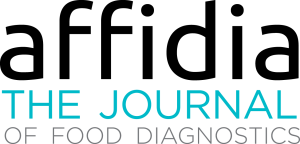Alerts and border rejections in Europe
An overview of the last ten years of notifications related to food contaminated with mycotoxins.
In order to protect food consumers and livestock, mycotoxin levels in food and feed need to be controlled because they have toxic properties that can sometimes cause chronic negative health effects (Bhat et al. 2010; Wild and Gong 2010). While the European Union does not prescribe health policies, its actions serve to complement national regulations and to support public health cooperation between member states. Most food legislation is harmonized at the EU level with binding legislative acts, such as directives and regulations, coupled with rules for their implementation. Directives set out results that must be achieved by all EU countries via national law through a process called transposition and usually within two to three years of adoption. Regulations do not require transposition.
In 1993, to empower the European Commission to take measures to ensure public health protections, the general principles of the EU legislation on contaminants in food were established (Council Regulation (EEC) No 315/93) along with EU-wide maximum levels (MLs) (Zmudzki and Wisniewska-Dmytrow 2004), which are binding in all member states. MLs for mycotoxins were introduced in 2006 and subsequently updated several
times, establishing the EU’s mycotoxin regulations as the most comprehensive worldwide (van Egmond 2004; van Egmond et al. 2007).
The European notification network
Along with relevant legislation, the EU has mandated an essential tool for real-time notification of incidents of food and feed non-compliance. The Rapid Alert System for Food and Feed (RASFF) is a robust rapid communication mechanism that enables the exchange of vital information to ensure that small food incidents do not become widespread crises.
The legal basis of the RASFF is Regulation (EC) No 178/2002 of the European Parliament, which establishes the general principles, requirements, and procedures in matters of food safety and food law. Article 50 of this Regulation defines the RASFF as a network involving the European Commission, the European Food Safety Authority (EFSA), and the member states, along with Switzerland and the European Economic Area (EEA) countries (Norway, Liechtenstein, and Iceland) (EC 2019).
If a product is found to be noncompliant, either by official inspection or through a company’s own testing, it is first reported within the national system. If the issue falls under the scope of the RASFF, the European Commission is notified, and the information is immediately transmitted to the members of the network. If the notification is related to a product that has been exported to or is originating from third countries (RASFF non-member countries), the Commission must inform these countries so they can take appropriate measures. Thus, RASFF’s benefits extend beyond the EEA borders.
Based on the seriousness of the risks detected and the distribution of the relevant products throughout the market, the RASFF notifications are classified as alert notifications, information notifications, or border rejection notifications.
An alert notification is sent when a food, feed, or food contact material available on the market presents a serious risk and rapid action is required. Thanks to the network, the RASFF member that identifies the problem provides every member the ability to confirm whe
Download content now





















